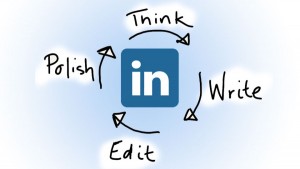
We live in era of interaction — a time in which productive interactions tremendously influence performance. If there’s one leading trend that has defined commerce and employment in this century, it’s social media. We review companies, shop, recruit and perform job searches through increasingly sophisticated social platforms. So it surprised investors and analysts to learn that Twitter is stagnating. In February, the pioneering social network announced that its earnings fell four percent and its user base failed to grow.
As USA Today wrote, “Twitter’s quarterly results showed once again just how mightily the social media service is struggling to attract new users. In the fourth quarter, user growth essentially ground to a halt.” Why? One answer is low-quality interaction. And it could be hindering an effective performance review process.
Low-Quality Interactions Diminish Human Potential
As noted author and management thought leader Umair Haque observed in the Harvard Business Review, the Twittersphere is plagued by abuse: online bullying, one-sided conversations, trolling and general hostility, where negative commentary muscles itself into the limelight. “We live in a world of strikingly dismally low-quality interactions,” Haque explained. “If we’re going to fix Twitter, or anything else, we must put people’s well-being before our own institutional performance — because the former drives the latter. Here’s the rule that we must remember: High-quality interactions expand human potential. Low-quality interactions reduce, diminish, and shrink it.”
These are powerful sentiments, especially in our ubiquitously socialized world. We talk a lot about the candidate experience and the value of a thriving employment culture, and yet performance reviews haven’t seemed to keep pace. It’s time to emphasize high-quality, meaningful interactions in the way we assess our talent.
The Future of Work is Defined by Interactions, Not Transactions
The growth of interactions-based work signals a large shift in the nature of economic activity, and one that will continue to shape the future. By the dawn of the 21st century, only 15 percent of U.S. employees undertook transformational work such as mining, operating machinery or running production lines. In 2009, according to data published by BLS and McKinsey, production-based jobs had declined by 2.7 percent. Transaction-based jobs fell by 0.7 percent. Work predicated on interactions, however, rose by 4.8 percent
With greater frequency, productivity is measured on jobs that require complex interactions as opposed to production-based and transactional work. Employees interact with other employees, customers and vendors. The decisions they make are multi-dimensional and founded on knowledge, judgment, experience and instinct. Problem solving is rapidly replacing material production and simple transactions, such as direct purchases. As more tasks become automated, more interaction-based roles are being created.
What’s Missing in Most Performance Reviews? Ongoing, Interactive Dialog
Industry-leading companies such as Accenture, Deloitte and Microsoft have virtually done away with traditional performance appraisals. In his interview with the Washington Post, Accenture CEO Pierre Nanterme explained that the once vaunted performance appraisal model no longer holds any clout with today’s generation of talent:
“If you put this new generation in the box of the performance management we’ve used the last 30 years, you lose them. We’re done with the famous annual performance review, where once a year I’m going to share with you what I think about you. That doesn’t make any sense. Performance is an ongoing activity. It’s every day, after any client interaction or business interaction or corporate interaction. It’s much more fluid.”
Peter Cappelli, director of the Wharton School’s Center for Human Resources, backs up Nanterme’s assessment: “If you wait a year to tell employees how they are doing, they are almost always surprised and unhappy if the results are not positive.”
Performance is truly an ongoing, interactive process. By limiting opportunities for feedback to a once-a-year event, companies risk losing the trust and engagement of their workers. Offering employees belated guidance, recognition or suggestions for improvement happens so far after-the-fact in these scenarios that little is gained. Even worse, when talent believe that their accomplishments will be considered and judged only once annually — especially if a bump in compensation is tied to the review — they tend to focus more on pleasing their boss instead of concentrating on delivering superior results for the organization.
Simply put, interaction is absent in the old evaluation approach. And this leads to a variety of inefficiencies for the business and its talent.
- The traditional process lacks an employee development element: Modern workers crave feedback and advice. Career development is a huge motivator for millennial talent. They want to know their strengths, weaknesses and best practices for achieving organizational objectives.
- Annual appraisals stifle employee growth: Workplace surveys indicate that over 80 percent of Millennials lose confidence in their abilities and their roles when regular interactions with their managers don’t occur. Those who participate in frequent performance conversations with their superiors demonstrate much higher levels of confidence and productivity.
- Hierarchical performance reviews are often hosted by the wrong parties: In very pyramidal business structures, many employees receive their reviews from company representatives who don’t directly supervise their work — HR personnel, executives, department heads and others. An annual review already stirs up enough stress; Having a stranger evaluate one’s achievements just augments that tension. Successful meetings require mutual respect, trust and a certain chemistry — the kind that develops between interactive managers and their direct reports. The most beneficial input a worker will receive comes from the person who sees their output every day of the year.
Designing a Modern, Interactive Review Process
It’s clear that we need to rethink the way we assess our talent — and engage them in the process. Here are some tips for creating a more interactive performance appraisal that will resonate with workers hungry for success.
Abandon annual reviews in favor of regular discussions. Routinely hold clear, open discussions about duties, performance expectations and ways to brainstorm improvements or solutions to issues. More importantly, allow team leaders to perform the appraisals for their talent. As the nature of work becomes more task and project oriented, relying on networked teams instead of corporate echelons, it makes less sense to have HR or a department’s director show up to grade individual performance.
- Challenge talent, provide authentic opportunities to take on greater responsibilities, encourage skills development and drive them to grow professionally — make them co-creators of a productive workforce.
- Coach talent and constructively critique areas for improvement, while championing the development of perspective-taking and problem-solving behaviors.
- Make an effort to express gratitude for jobs well done, ensuring that your appreciation and recognition are publicly acknowledged within the team and enterprise.
Look ahead, not behind. One of the pitfalls of annual reviews comes from trying to recollect events that took place long ago. It’s difficult to correct problems that now seem like “damage done,” or reward major accomplishments that have lost their luster during the intervening months. Instead of trying to dredge up specific issues, a better approach is to use internal HR technologies to collect data and generate metrics that serve as indicators of overall performance, which become conversations for strategizing future improvements and opportunities.
Focus on strengths, not weaknesses. Unfortunately, the traditional performance review leans toward examinations of shortcomings, areas for improvement and criticism. Whether constructive or not, the general impression becomes one of missing the mark. A more effective and interactive approach is to focus on the strength of team members. When managers steer the discussion toward successes, they have a better chance of inspiring their talent to capitalize on those strengths. Not only does this help build a culture where people are motivated to contribute, any weaknesses become apparent — in an organic way that eliminates perceived hostility, disappointment or ill feelings.
For example, instead of opening the topic with a statement like, “The team failed to complete Project X on time,” talk about all the projects that really shined. Then, it’s much easier to redirect the conversation: “The team did an amazing job on Projects A, B, and C. This quarter, let’s see how we can we apply those same efforts to Project X.”
Interaction Is Engagement
In this job market, retaining top producers is critical to success. That’s why we pay so much attention to employment brand, business culture, socialization and the employee experience — all factors that directly affect bottom-line performance. And meaningful interactions are at the heart of these efforts. With the right performance appraisal process, we can inspire talent to exceed their own goals while reinforcing a sense purpose and clarity about how their contributions make our organizations stronger.
Business & Finance Articles on Business 2 Community(31)
Report Post







